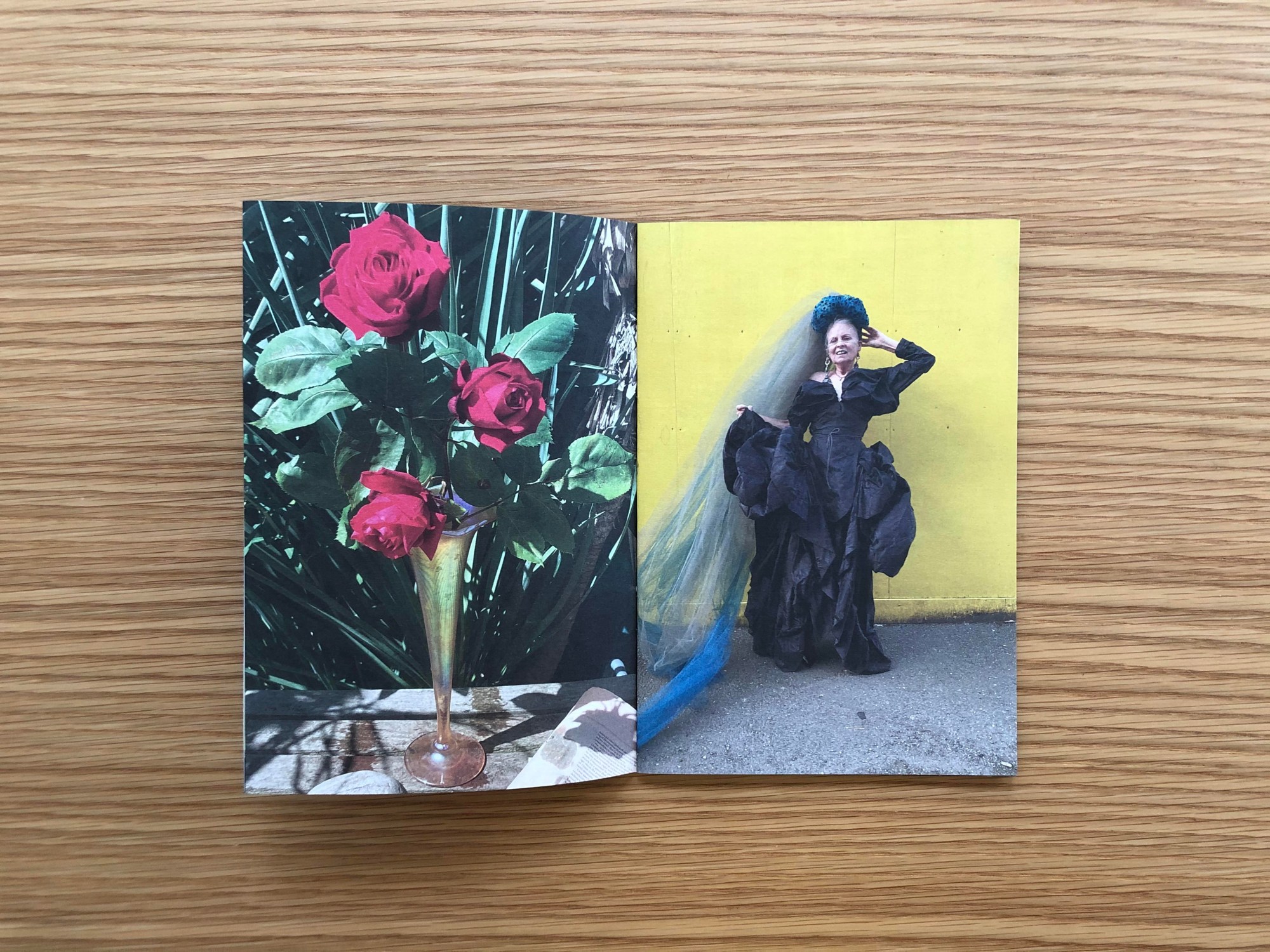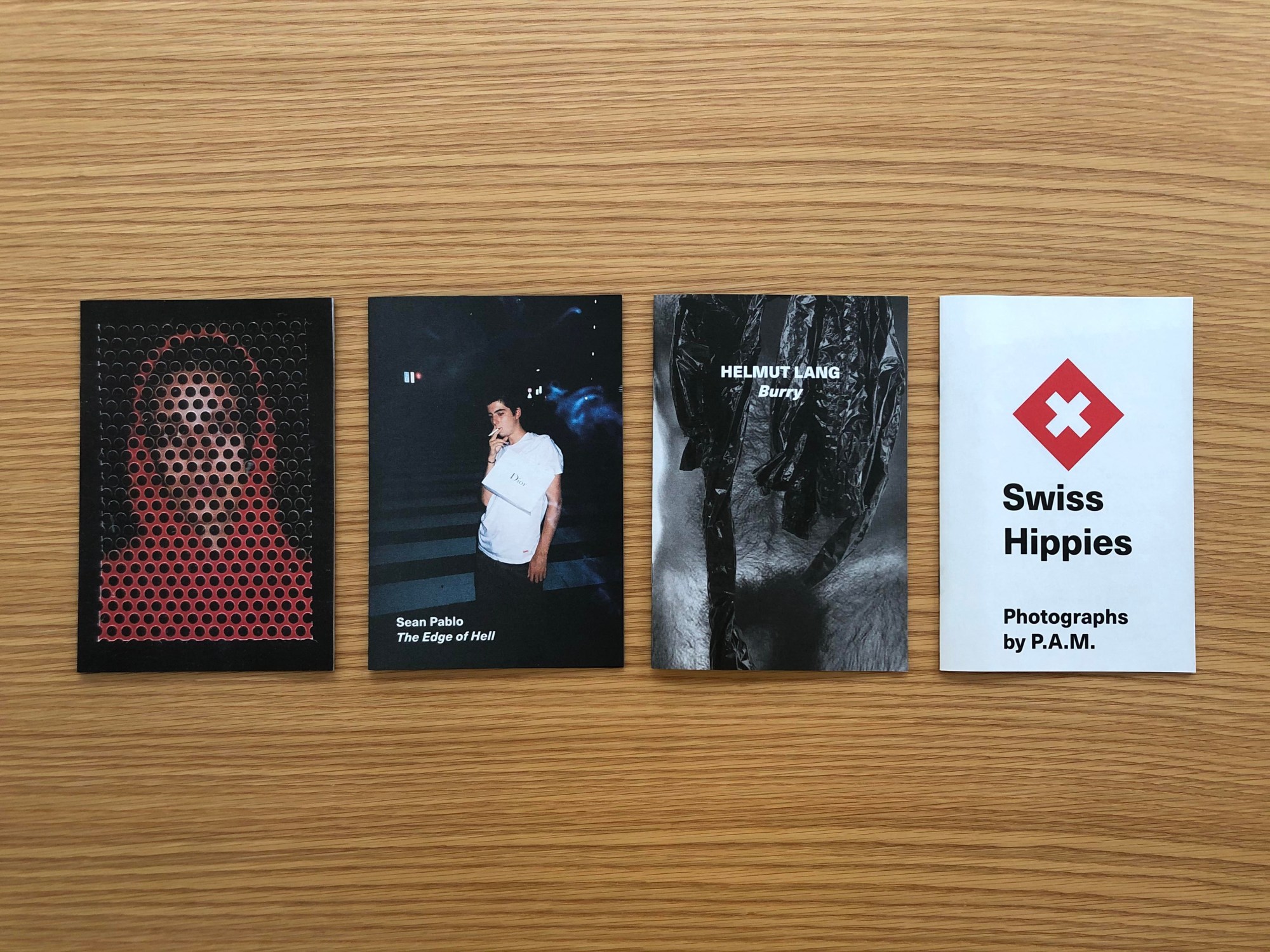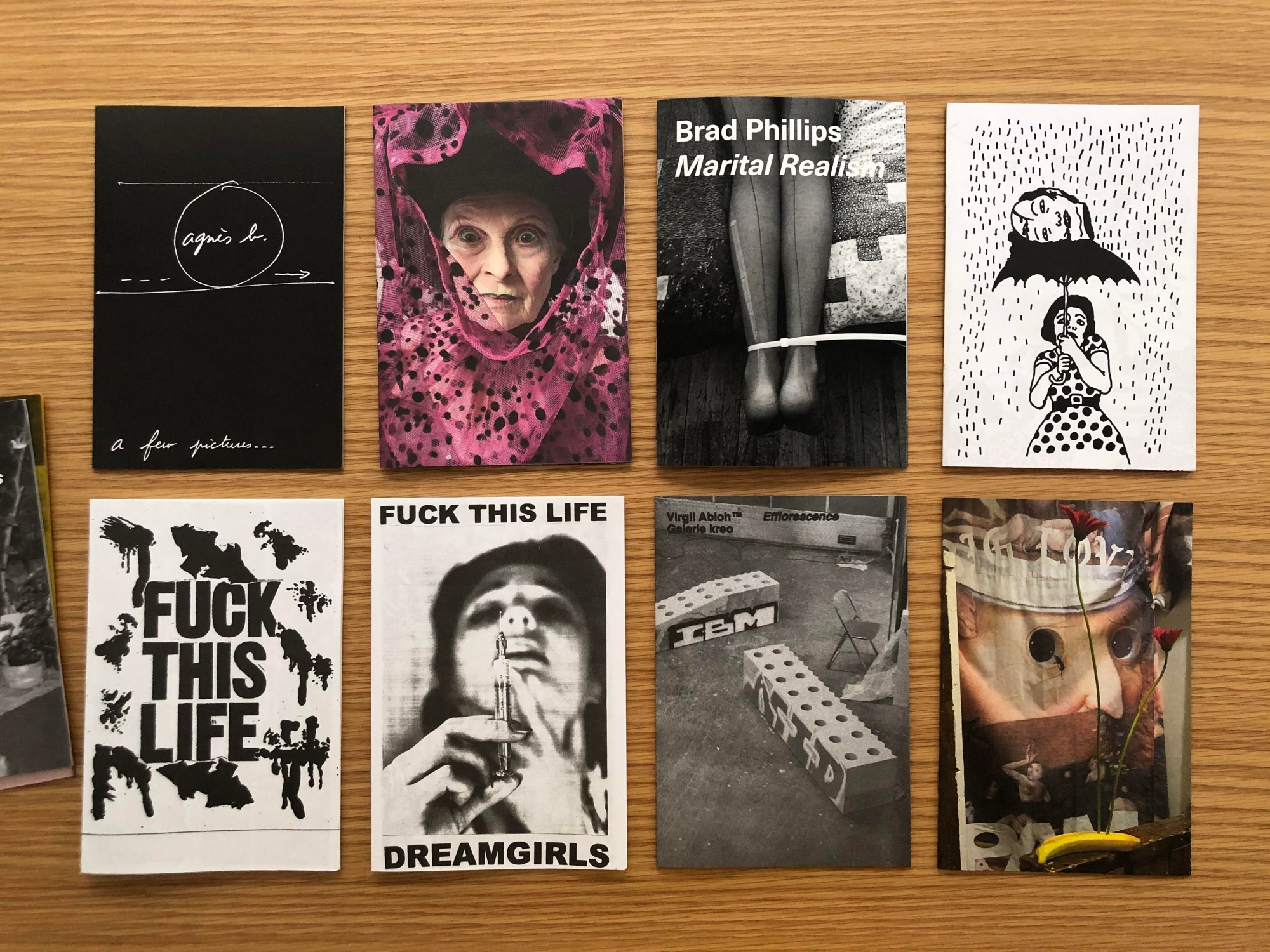In many ways, the technological acceleration we’ve experienced over the last two years (courtesy of the coronavirus pandemic) has radically improved accessibility in work and creativity: activities that were once restricted, rooted in reality, and tied to a specific location, are now available to all. However, there is an ominous sense of loss that has come with this progress: the feeling that Miss Rona has transformed the rich, real-life we once knew as life into one long, drawn-out online transaction.
For those of us obsessed with printed matter, given the protracted closure of bookshops and art galleries around the world, the physical rituals of reading – leafing through a new zine, discovering treasure troves of iconic art and fashion titles – have been all but removed, replaced with digital browsing. But the thrill of physical artwork hasn’t gone anywhere. “There’s something more exclusive about holding a publication in your hand,” says Aaron Fabian, founder of the Zürich-based art book and zine publisher, Innen Books (@innenbooks). Explaining the continued appeal of analog art, particularly in times of crisis, he continues: “People want some escapism from the current situation. And people want something to look forward to when the postman arrives.”
Since its establishment nearly a decade ago, Innen’s prestigious reputation has attracted zine collaborations with creatives including Vivienne Westwood, Jerry Saltz, and Virigl Abloh. Here, Aaron tells i-D about working with some of the world’s biggest artists, the ins-and-outs of quality zine-making, and the future of print itself.

What made you start Innen Books? Was there a particular zine or art book that made you want to get into publishing?
Both of my parents are creatives with backgrounds in the arts. My father works as a graphic designer: he studied typography and has designed lots of books as well as publishing his own books of poetry and illustration. My mother was an Art History teacher and as a child, I started looking through my parents’ art books – every wall in our house was covered in books – and at around 12 years old I started to collect items from this old secondhand bookshop close by, which sold anarcho-punk zines, stickers, and other cool stuff. With the understanding of publishing I’d gained from my father, I started making simple handmade fanzines with my friends about punk rock and anarchism – just things that I thought were cool when I was 12. It was the easiest and quickest way to create something physical from our art and illustrations.
I started Innen when I was 20, and I was studying at Moholy-Nagy University of Art and Design. I made the first official Innen zine with the photographer Füredi Tamás – it was a run of about 60 copies – and later issues with more friends and local Hungarian artists.
How did you get so many well-established artists interested in publishing their work with you? Did you reach out to them or do they reach out to you?
Generally, I prefer to select the artists and curate what feels right for Innen. It tends to happen through word of mouth and talking to local galleries. Most famous artists already have several hardcover photo books published, and smaller scale zines are a more affordable way for their fans to access their art. It’s normally quite an easy process. I request particular works from the artist and we work collaboratively to make something we’re both happy with.

Tell us about a project you’re currently working on.
We’ve just released an Araki zine, of Nobuyishi’s unpublished polaroids. This project has been in the works for ages, mainly because even after contacting a few galleries who have been working with Araki, no one was interested. We needed to do some convincing, explain how a cheaper zine publication would be unique to this market and be able to reach customers quicker. Printing and distribution are super fast compared to the bigger publishing houses where there’s a business hierarchy, and questions around what can or can’t be done take much longer to answer.
We have new titles coming for the Innen Japan series too, with editor Hiroshi Iguchi. It’s a special series with only Japanese contributors. There’s also a plan to do a special purple zine series with Olivier Zahm.
You also run Zug Magazine, can you tell us more about that publication?
I started Zug Magazine in 2010 – the first issue was made up of work from my university projects, and the topic was “collecting.” József Mélyi (an art historian based in Budapest) helped me to find topics and texts for the first few issues. I wanted to create something more complex than the zines I’d been previously creating, with a distinct editorial tone, more text-heavy, and inclusive of advertising. I also kept the text in Hungarian to keep things interesting for non-Hungarian speakers and to give it more of an unorthodox layout.

What do you see as the future for print? Do you think it will explode in popularity again like vinyl and film photography or become more of a sub-culture medium?
I think it’s going to continue to grow. The internet and digital life are just so boring and are only getting more boring, in my opinion.
Follow i-D on Instagram and TikTok for more on photography and publishing.
